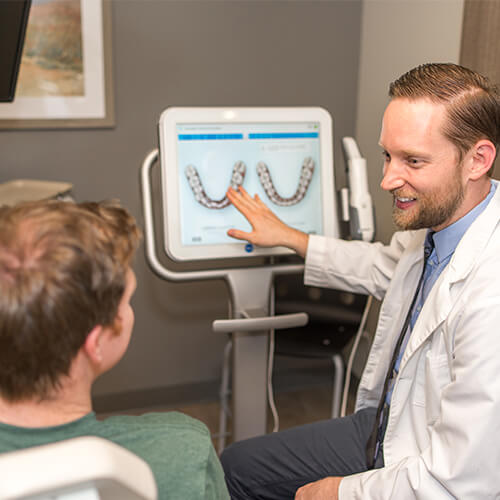Spotting cavities and maintaining good oral hygiene are vital for a healthy smile and overall well-being. Yet, despite our best efforts with brushing, flossing, and regular dental check-ups, cavities can still sneak up on us.
These tiny, destructive holes in our teeth can lead to pain, discomfort, and even tooth loss if left untreated. But fear not! By understanding the signs and symptoms of cavities, you can catch them early and take proactive steps to preserve your dental health.

What Are Cavities?
Before diving into the signs of cavities, it’s essential to understand what they are and how they develop. Cavities, also known as dental caries, are areas of decay on the surface of your teeth. They occur when plaque, a sticky film of bacteria, combines with sugars and starches from the foods we eat to produce acids.
These acids then attack the tooth enamel, weakening it and eventually leading to the formation of small holes or pits. While spotting cavities, they can develop on any tooth surface, they are most commonly found on the chewing surfaces or between teeth, where plaque tends to accumulate. Without treatment, cavities can deepen, affecting the inner layers of the tooth and causing pain, infection, and other complications.
Signs and Symptoms of Cavities:
- Tooth Sensitivity
One of the earliest signs of a cavity is tooth sensitivity, particularly to hot, cold, sweet, or acidic foods and drinks. You may notice a sharp, sudden pain or discomfort in response to temperature changes or certain types of foods. This sensitivity occurs as the cavity erodes the enamel, exposing the underlying dentin and nerves of the tooth.
- Toothache or Pain
As cavities progress and deepen, they can cause persistent toothaches or pain, especially when biting down or applying pressure to the affected tooth. The pain may vary in intensity, ranging from mild discomfort to severe throbbing, depending on the extent of the decay and nerve involvement. If you experience consistent or worsening tooth pain, it’s crucial to seek dental attention promptly to prevent further damage.
- Visible Holes or Pits
In some cases, cavities may be visible to the naked eye as dark spots, holes, or pits on the surface of the tooth. These visual cues are often indicative of advanced decay and warrant immediate dental evaluation and treatment. However, not all cavities are visible, especially in the early stages, making regular dental check-ups essential for early detection.
- Tooth Discoloration
Cavities can cause changes in the color of the affected tooth, ranging from white spots to brown or black stains. These discolorations may be subtle at first but can become more pronounced as the decay progresses. If you notice any unusual discoloration or staining on your teeth, particularly in areas prone to plaque buildup, it’s essential to have them examined by a dentist.
- Bad Breath or Unpleasant Taste
The bacteria responsible for cavity formation can produce foul-smelling gasses and byproducts, leading to bad breath or a persistent unpleasant taste in the mouth.
Even with regular brushing and mouthwash use, you may find it challenging to get rid of this odor or taste, as it originates from deep within the cavities. Addressing the underlying cause of the bad breath with professional dental care is necessary to eliminate the odor permanently.
- Swelling or Pus
In advanced cases of cavities, the infection may spread beyond the tooth, leading to swelling and inflammation of the surrounding gum tissues. You may notice redness, tenderness, or swelling around the affected tooth, along with the presence of pus or drainage.
These symptoms indicate a dental abscess, a serious complication of untreated cavities that requires immediate attention to prevent further spread of infection.

Importance of Early Detection:
Detecting and spotting cavities in their early stages offers several benefits:
Prevent Progression:
Early intervention can halt cavity progression, preventing further damage to the tooth structure and surrounding tissues.
Minimize Pain and Discomfort:
Addressing cavities early can alleviate toothaches, sensitivity, and other discomfort, improving your oral comfort and quality of life.
Preserve Tooth Structure:
Timely treatment preserves more of your natural tooth structure, reducing the need for extensive dental work like fillings or crowns.
Save Time and Money:
Addressing cavities early often requires less invasive and costly dental procedures compared to treating advanced decay or complications.
Conclusion
Cavities are a common dental issue that can have significant consequences if left untreated. By recognizing the signs and symptoms of cavities, you can catch them early and seek prompt dental care to prevent further damage and preserve your oral health.
Remember to maintain good oral hygiene practices, such as brushing twice daily, flossing regularly, and attending routine dental check-ups, to minimize your risk of developing cavities. Your smile is worth protecting, so don’t hesitate to consult your dentist if you suspect you have a cavity or any other dental concern. Don’t forget to visit our Facebook!
